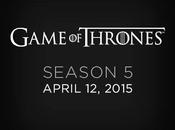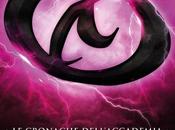Magazine Cultura
In oneof his most famous essays, Friedrich Schiller distinguished betweennaïve poets and sentimental poets, the former writing spontaneouslywithout planning anything and the second being very self-aware oftheir writing and the problems raised by their work. Havingread the first volume of “War and Peace”, I could not help butthink that Tolstoj must be necessarily included in the naïvecategory, only to realise that this cannot be possible, that a writerlike Tolstoj would have known where his story would go. While readingthe first volume of Tolstoj’s grandiose effort, I constantly hadthe impression that the author was consciously writing about thepursuit of one’s happiness in life, but that he did not always havea clear-cut idea of where and how Pierre, Prince Andréj, NikolajRostòv or Nataša could find it. I might be terribly wrong, becauseTolstoj kept revising and rewriting episodes of the book for a verylong time, so he must have had some idea of where he was going. At thecentre of the story there is history of course: the Napoleonic warsthat saw Russia fighting alongside Austria against the French play abig role in the 'war parts', but it is the ultimate meaning ofhistory that is at stake in this book. What is history and can commonpeople ever be a part of it? “War and Peace” is also a hugecanvas of Russian aristocracy, of its falseness and affectation aboveall. Ironically enough, while princes and counts converse in goodFrench, Russia is at war with Napoleon, who is regarded as acharlatan of an emperor and cannot compete with his Russiancounterpart, Alexander I. At the centre of the question, there areideas about Russian identity and the influence of Europe. Thecharacters in the story seem to be more spontaneous when they speakRussian or when they try to live a genuine, simple life that does notinvolve discussing politics or philosophy. It is not by chance thatevery major character is looking for happiness, whether throughmasonry, marriage or war achievements.“Warand Peace” has many, maybe too many characters. For at least 300pages you need to write them down on a piece of paper and constantlylook at it. In spite of this, some of them really standout: Pierre, the clumsy,illegitimate son of a wealthy count, who is lost and confused to thepoint of entering masonry was createdwith tenderness and affection by Tolstoj, who clearly saw much ofhimself in him. Then there is Prince Andréj Bolkonskij, ayoung officer with a pregnant wife and an eccentric father, and twosiblings, Nikolaj and Nataša. He is a somehow idealistic young manwho is in love with his orphan cousin Sonja to the despair of hisimpoverished parents, while Nataša, still a child at the beginningof the book, grows into a very beautiful young woman who is at a lossregarding her marriage. There are also some purely depravedcharacters like Hélène Kuraghina and her brother Anatole,libertines who clearly represent the moral corruption of the societyof the time (Tojstoj wrote the novel in the 1860s, but set it in theearlier decades, which he probably found more interesting because ofthe historical events). This is a complex novel which blends history with a familysaga literally throbbing with life. It contains elements ofphilosophy, social sciences, politics and god knows what more. So farit has been an enriching experience to read it, but it has beenrather demanding. Sometimes it feels like you are reading a very longdirector's cut, where episodes do not apparently lead to anythingimportant or where you simply miss the point the author is trying tomake, but I think it is just because Lev Tolstoj sometimes is in over my head.
Possono interessarti anche questi articoli :
-
Le epoche d'oro dell'arte
Segui la bacheca Riflessioni di Artesplorando su Pinterest. Prima che l'arte diventasse una faccenda individuale che l'artista sbroglia nel suo studio o nei... Leggere il seguito
Da Artesplorando
ARTE, CULTURA -
Cannibal Music: i dischi di giugno 2015
Condividi Questo mese rischiavo di non farcela, preso com'ero ahimé tra i migliori e i peggiori tormentoni dell'estate, ma alla fine ce l'ho fatta. Leggere il seguito
Da Cannibal Kid
CULTURA -
Due parole sulla V stagione di Game of Thrones
E' così, un paio di settimane fa, si è conclusa la quinta stagione di Game of Thrones. Io non ne ho parlato, vuoi perché ho altro a cui pensare, vuoi perch... Leggere il seguito
Da Frank_romantico
CINEMA, CULTURA -
Anteprima: "LE CRONACHE DELL'ACCADEMIA SHADOWHUNTERS - 4. SOLTANTO OMBRE" di...
Genere: Urban fantasyEditore: MondadoriCollana: Fiction 2015Pagine: 76Prezzo: € 2,99Uscita: 30 giugno 2015Sinossi:Simon viene a conoscenza della storia di... Leggere il seguito
Da Blog
LIBRI -
I migliori tormentoni dell'estate 2015
Condividi Dopo essere scesi negli inferi, e non per il caldo, con l'ascolto dei peggiori tormentoni dell'estate 2015, adesso tocca ai migliori. Leggere il seguito
Da Cannibal Kid
CULTURA -
Giappone a Londra // Japan in London: JP Books
[English version below]È vero che lasciare il Giappone è stata una mia libera scelta, ma non significa che non mi manchi da impazzire. Leggere il seguito
Da Automaticjoy
ASIA, CINEMA, CULTURA






